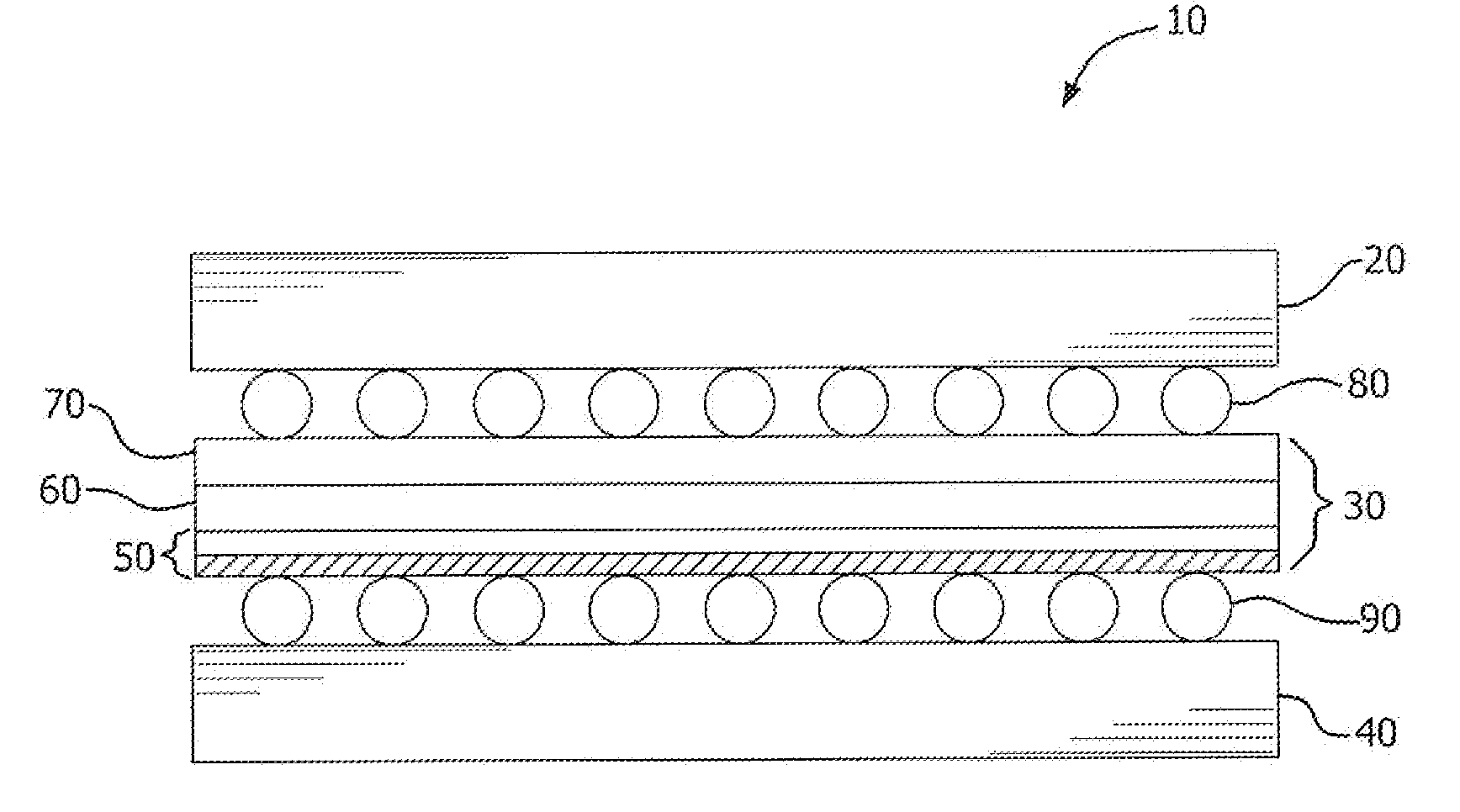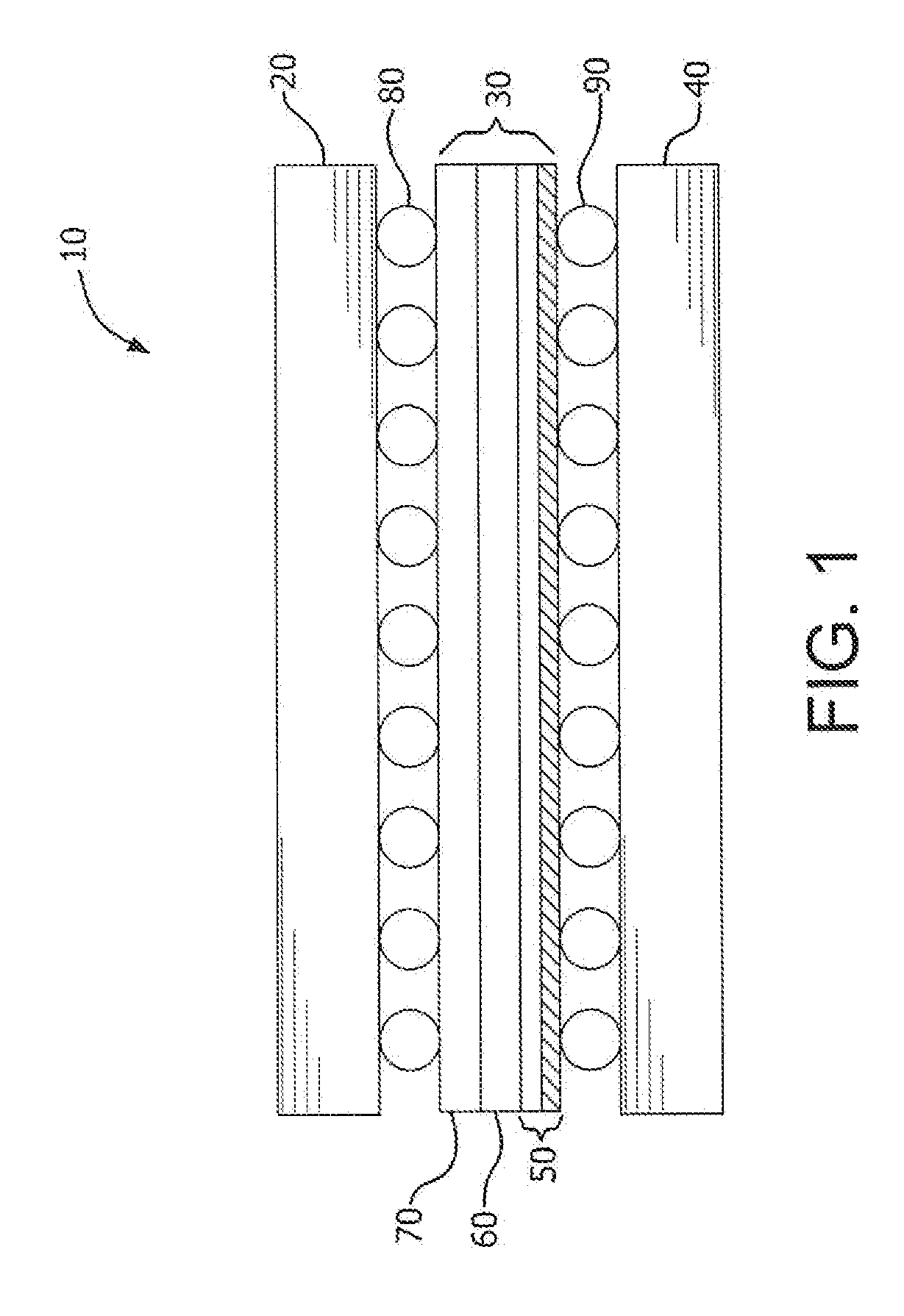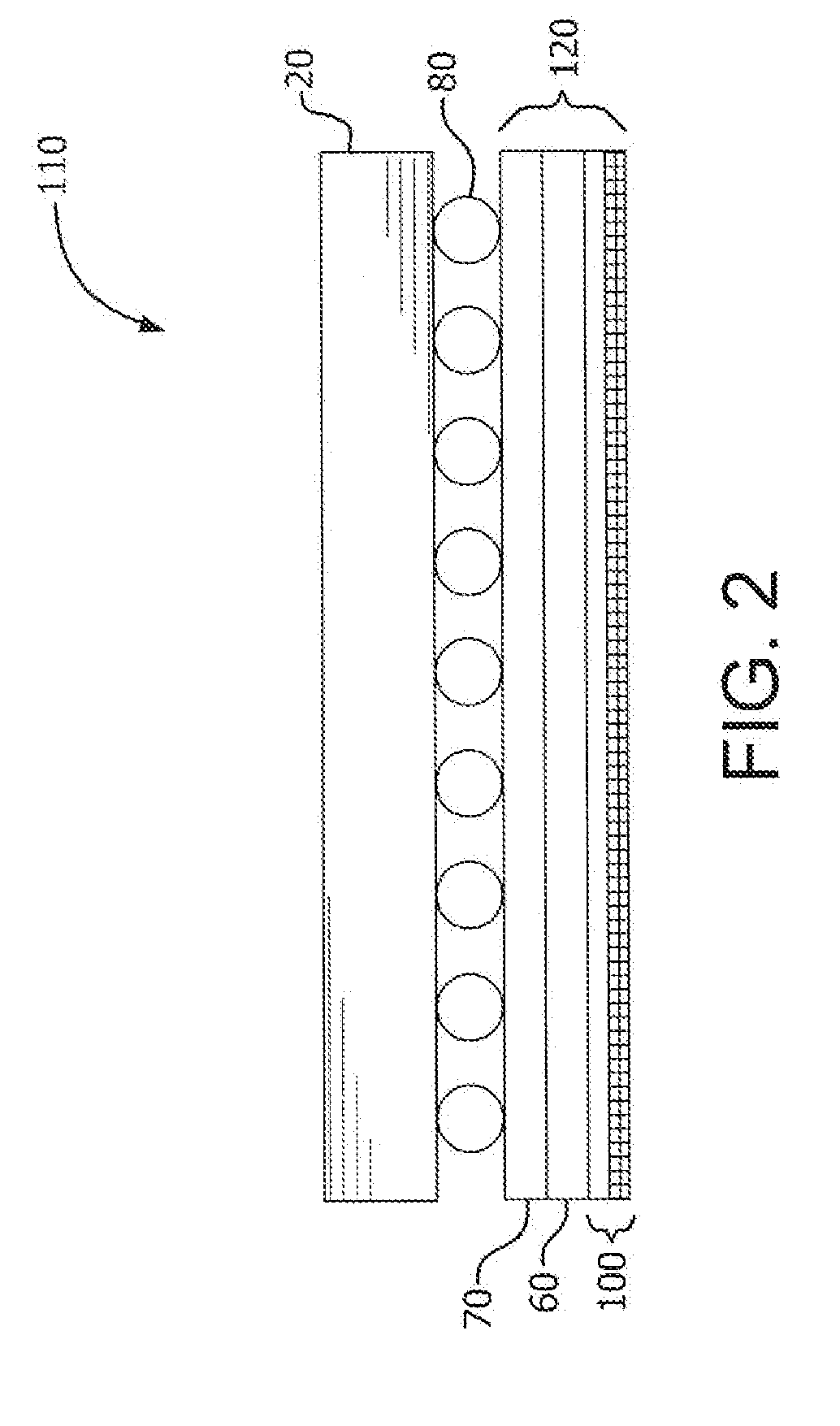Reversible Camouflage Material
a camouflage material and reverse technology, applied in the field of camouflage materials, can solve the problems of poor nir camouflage durability of textile materials, wash and/or wear, and coatings can affect the visible, nir, swirl camouflage properties of textiles,
- Summary
- Abstract
- Description
- Claims
- Application Information
AI Technical Summary
Benefits of technology
Problems solved by technology
Method used
Image
Examples
example 1
[0052]A reversible garment material was constructed in the following manner. A 30 denier (30D) by 30 denier (30D) printed, woven woodland MARPAT camouflage fabric with carbon incorporated into the ink used in the printing process is bonded as follows:
[0053]1) A three-layer film composite, approximately 0.27 mm thick was obtained consisting of a polyurethane layer sandwiched between two ePTFE layers. This laminate was constructed in accordance with the general teachings of U.S. Pat. No. 5,418,054 to Sun except that no phosphorous or other flame-retardant material was incorporated into the polyurethane layer. A fluoroacrylate, carbon-containing coating (to aid in controlling nIR reflectance), as generally taught in U.S. Patent Publication No. 2007 / 0009679 to Holcombe, et al. was then applied to one side of the film laminate in order to render it oleophobic while preserving the microporous structure.
[0054]2) The bond of the woodland MARPAT fabric layer to the 3 layer film composite was...
example 2
[0059]A reversible garment material was constructed in the following manner. A 30D by 30D printed, woven woodland MARPAT camouflage fabric with carbon incorporated into the ink used in the printing process is bonded as follows:
[0060]1) A three-layer film composite, approximately 0.17 mm thick was obtained consisting of a polyurethane layer sandwiched between two ePTFE layers. This laminate was constructed in accordance with the general teachings of U.S. Pat. No. 5,418,054 to Sun except that no phosphorous or other flame-retardant material was incorporated into the polyurethane layer.
[0061]2) The bond of the woodland MARPAT fabric layer to the 3 layer film composite was made by applying a dot pattern of a melted polyurethane adhesive to the 3 layer film composite. While the polyurethane adhesive dots were molten, the fabric was positioned, non-printed side down, on top of the adhesive side of the three layer film composite. This construct was allowed to cool.
[0062]The construct demon...
PUM
| Property | Measurement | Unit |
|---|---|---|
| wavelength range | aaaaa | aaaaa |
| wavelength range | aaaaa | aaaaa |
| thickness | aaaaa | aaaaa |
Abstract
Description
Claims
Application Information
 Login to View More
Login to View More - R&D
- Intellectual Property
- Life Sciences
- Materials
- Tech Scout
- Unparalleled Data Quality
- Higher Quality Content
- 60% Fewer Hallucinations
Browse by: Latest US Patents, China's latest patents, Technical Efficacy Thesaurus, Application Domain, Technology Topic, Popular Technical Reports.
© 2025 PatSnap. All rights reserved.Legal|Privacy policy|Modern Slavery Act Transparency Statement|Sitemap|About US| Contact US: help@patsnap.com



